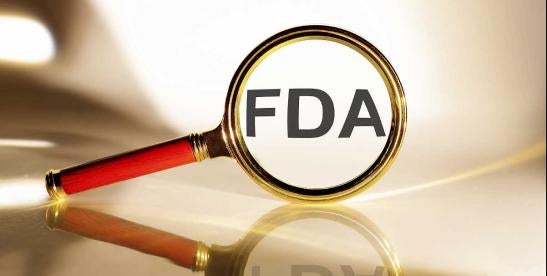On April 29, 2024, the US Food and Drug Administration (FDA) issued the long-awaited final rule around the regulation of laboratory developed tests (LDTs), which are in vitro diagnostic products (IVDs) that FDA describes as intended for clinical use and are designed, manufactured and used within a single clinical laboratory that meets certain regulatory requirements. The final rule amends FDA’s regulations to make explicit that IVDs are devices under the Federal Food, Drug, and Cosmetic Act (FDCA), including when the manufacturer of the IVD is a laboratory. Along with this amendment, FDA finalized its policy to phase out, over the course of four years, its general enforcement discretion approach for many LDTs. The agency also issued targeted enforcement discretion policies for certain categories of IVDs manufactured by laboratories.
IN DEPTH
It has long been FDA’s position that the FDCA gives it authority to regulate LDTs as medical devices. Historically, FDA has exercised enforcement discretion with respect to most LDTs and has not required the laboratories offering such tests to comply with FDA regulatory requirements for medical devices. However, on September 29, 2023, FDA published its to modify its regulations to explicitly state that IVDs are devices, including when the manufacturer of the IVD is a clinical laboratory.
The final rule is consistent with the proposed rule in many respects. As in the proposed rule, the final rule states that LDTs generally will be subject to FDA’s existing regulatory framework for medical devices by making explicit that IVDs are devices under the FDCA, including when the manufacturer of the IVD is a laboratory. However, FDA substantially expanded its list of tests that will be eligible for some form of “grandfathering” (i.e., continued enforcement discretion), including LDTs currently on the market, LDTs that obtain New York State approval, and certain LDTs offered by integrated health systems for patients with unmet needs, with certain important limitations discussed below.
| Scope of Exemption | Types of Tests |
|---|---|
| Exempt from all medical device requirements |
|
|
Exempt from premarket review requirements only
(All other device requirements apply – e.g., registration/listing, adverse event reporting, labeling, investigational use, quality systems, inspections) |
|
|
Exempt from premarket review requirements and quality systems (QS) requirements (except for record-keeping requirements)
(All other device requirements apply – e.g., registration/listing, adverse event reporting, labeling, investigational use) |
|
FDA notes that it “retains discretion to pursue enforcement action for violations of the FDCA at any time and intends to do so when appropriate.” FDA explains that it “may update any of these [enforcement discretion] policies as circumstances warrant or if the circumstances that inform these policies change, consistent with FDA’s good guidance practices.”
Nearly identical to the timelines set forth in the proposed rule, the final rule describes the phase-out of enforcement discretion to occur in five stages over the next four years. Key dates are indicated below:
- Phase 1 (effective May 6, 2025 – one year post-publication of final rule):
- End enforcement discretion with respect to medical device (adverse event) reporting, correction/removal reporting requirements and maintenance of complaint files under the FDA QS requirements (21 CFR 820.198).
- Phase 2 (effective May 6, 2026 – two years post-publication):
- End enforcement discretion with respect to all other device requirements not listed elsewhere (e.g., registration/listing, labeling, investigational use).
- Phase 3 (effective May 6, 2027 – three years post-publication):
- End enforcement discretion for QS requirements (other than complaint files, which are addressed in Phase 1).
- Phase 4 (effective around November 6, 2027 – three and a half years post-publication):
- End enforcement discretion for premarket review requirements for high-risk tests (i.e., tests subject to premarket approval requirements).
- FDA will continue to exercise enforcement discretion for these tests while its review is pending.
- Phase 5 (effective May 6, 2028 – four years post-publication):
- End enforcement discretion for premarket review requirements for moderate- and low-risk tests (i.e., tests subject to de novo or 510(k) requirement).
- FDA will continue to exercise enforcement for these tests while its review is pending.
ANALYSIS
Although the final rule runs more than 500 pages, a substantial number of questions remain unanswered. For example:
- Does FDA have legal authority to regulate LDTs? Consistent with FDA’s longstanding position, the agency argues – at length – that the FDCA gives it authority to regulate LDTs as medical devices. Nevertheless, it appears likely that laboratory stakeholders will challenge the agency’s position in court. To date, the courts have not conclusively addressed this issue.
- How meaningful is FDA’s expansion of “grandfathering”? On its face, the final rule gives laboratories offering certain LDTs a pathway to remain on the market without complying with some of FDA’s most onerous requirements (e.g., premarket review and, depending on the test, most QS requirements). However, FDA makes clear that it retains the ability to take enforcement action against any “violative” LDT at any time. In furtherance of its ability to make such assessments, FDA intends to “request” labeling from laboratories for such LDTs (including information on test performance and a summary of validation data). The agency “anticipates” that laboratory manufacturers will alert FDA regarding potential problems with their competitors’ tests once performance information is made publicly available. Either of these pieces of information could potentially lead to agency enforcement action, depending on the agency’s assessment of the relevant facts and circumstances. And finally, many of the grandfathering provisions only apply insofar as the test is not modified in a manner that would trigger the requirement for a new submission – effectively locking many LDTs in their current form unless labs wish to comply with the broader list of FDA requirements.
- Will the final rule change industry’s – or Congress’s – position on the VALID Act? While the final rule includes certain potentially meaningful concessions from FDA (on grandfathering), it remains constrained by the parameters of the FDCA’s medical device framework. As a result, some stakeholders may reasonably conclude that VALID is the more favorable of the two options. The US House of Representatives Energy and Commerce Health Subcommittee held a hearing on March 31, 2024, regarding FDA’s regulation of diagnostics, in which VALID was specifically discussed. Committee leaders and the sponsors of VALID were quick to express interest in moving the legislation forward after the final rule was released. Stakeholders anticipate that the Energy and Commerce Committee will continue to prioritize this issue, but action in the US Senate is less clear.
- What tests will FDA down-classify? In January 2024, FDA announced its intent to down-classify certain types of assays. The final rule mentions this announcement in several places but does not provide any additional details on the types of tests that may be eligible for down-classification (beyond the companion diagnostic and infectious disease tests noted in the original announcement).
FINAL GUIDANCES
In addition to the final rule, FDA issued two draft guidance documents. The first provides the agency’s thinking about an enforcement discretion policy for certain laboratories offering certain unauthorized IVDs for immediate response to an emergent situation, such as an outbreak of an infectious disease, in the absence of a public health emergency declaration applicable to IVDs. The second provides insight into the factors the agency intends to consider when developing a policy regarding enforcement discretion for certain IVDs during a public health emergency. These guidances are open for public comment through July 5, 2024.
EUROPEAN CONSIDERATIONS
FDA’s final rule is similar to regulatory changes in Europe introduced in 2017 through the In Vitro Diagnostics Regulation (IVDR). Before the IVDR, LDTs (or in-house tests, as they are more commonly called in Europe) fell outside of the in vitro diagnostic regulatory regime, although some countries, including Germany and the United Kingdom, had already issued guidance that tests transferred outside of a healthcare institution must be certified or otherwise regulated to some extent. Under the IVDR, LDTs must comply with new conditions. In particular, tests must be used in-house in an EU health institution only. LDTs must be produced in accordance with a quality management system, and the manufacturing healthcare institution must ensure quality assurance, issue a declaration of conformity and keep records. The most onerous and controversial requirement is that health institutions must justify that the needs of a patient group cannot be met by a certified test on the market (the “no-comparator” test).
The IVDR implementation in Europe has been costly, with many manufacturers indicating that they may withdraw tests from the market. This has led to several suspensions to the deadlines for compliance. While some LDT requirements must be met by May 2024, in January 2024, the European parliament proposed to extend the deadline for the “no-comparator” test to December 2030. In the United Kingdom, the government has proposed introducing rules similar to the IVDR for the Great Britain market that are aligned to current guidance. This legislation has likewise been delayed.
Marissa Hill Daley and Bella North contributed to this article.






 i
i


